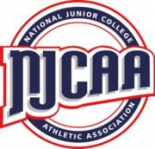Grenoble dominates Angers to clinch 9th Ligue Magnus title
Brûleurs de Loups seal the title at home with dominant Game 5 victory as veterans Hardy and Fleury bid farewell to the ice Read more»

Did you find any incorrect or incomplete information? Please, let us know.
| 03 Aug 2016 | |  Viktor Brask
(F) Viktor Brask
(F)
|  Dakota College at Bottineau Dakota College at Bottineau |  University of Nevada-Las Vegas University of Nevada-Las Vegas | |
| 03 Aug 2016 | |  Erik Eidissen
(G) Erik Eidissen
(G)
|  Dakota College at Bottineau Dakota College at Bottineau |  University of Nevada-Las Vegas University of Nevada-Las Vegas | |
| 05 Jul 2016 | |  Maxim Gruzdev
(F) Maxim Gruzdev
(F)
|  Florida Eels Florida Eels |  Broome Community College Broome Community College | |
| 13 Jan 2016 | |  Marcus Enqvist
(F) Marcus Enqvist
(F)
|  Dakota College at Bottineau Dakota College at Bottineau |  Tegs SK Tegs SK |
The National Junior College Athletic Association (NJCAA), founded in 1938, is an association of community college and junior college athletic departments throughout the United States. It is held as Divisions and Regions. The current NJCAA holds 24 separate regions.
The idea for the NJCAA was conceived in 1937 at Fresno, California. A
handful of junior college representatives met to organize an
association that would promote and supervise a national program of
junior college sports and activities consistent with the educational
objectives of junior colleges.
The constitution presented at the
charter meeting in Fresno on May 14, 1938, was accepted and the
National Junior College Athletic Association became a functioning
organization.
In 1949, the NJCAA was reorganized by dividing the
nation into sixteen regions. The officers of the association were the
president, vice president, secretary, treasurer, public relations
director, and the sixteen regional vice presidents. Ironically, though
the NJCAA was founded in California, it no longer operates there and has
been supplanted instead by the unaffiliated California Community
College Athletic Association (CCCAA) with 100+ colleges participating.
Brûleurs de Loups seal the title at home with dominant Game 5 victory as veterans Hardy and Fleury bid farewell to the ice Read more»
The transnational influence of European NHL players has become a transformative force in reshaping hockey development programs across their home nations. By importing NHL-caliber training methodologies while funding grassroots initiatives, these athletes are driving measurable growth in participation and competitive outcomes. ... Read more»